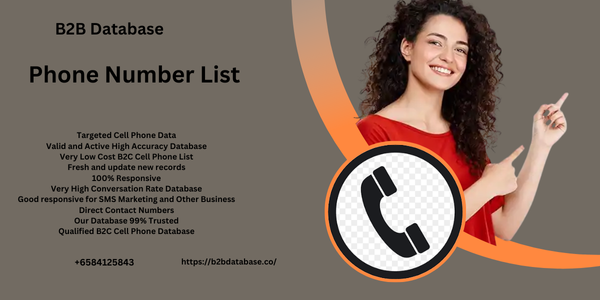|
|
There’s a classic adage that says the customer is king. While there’s some nuance to this, overall it’s a simple but solid piece of advice for anyone trying to build an effective marketing strategy. That includes the communication channels you choose to use.
Do your customers want to receive messages via email or SMS? And do you really have to choose?
A new report from Synch delves into the opinions of Phone Number List American consumers. The goal of the study is to find out how they want to receive news from brands. The Art and Method of Building Meaningful Connections with Customers includes the results of this survey as well as a wealth of insights on multichannel communication. In this article, we’ll look at some of the key findings from the study, after comparing the ins and outs of SMS and email marketing.
SMS and emailing: an ancient story
In reality, email and SMS grew up together, like siblings. Here's how and when it all started...
Most people think that email was invented in 1971. At first, it was only available to people using the gigantic computers that the early Internet pioneers had to share. But as access to personal computers and the Internet grew, so did the need for a way for machines to communicate. The rest is email history .
The history of SMS begins in the United Kingdom in the early 1990s, when email was becoming a part of everyday life. In 1993, a British software engineer working for Vodafone on what would become SMS first sent “Merry Christmas” to a colleague. Texting really took off with the advent of personal mobile phones a decade later.
Today, there are many other digital communication channels you can use to reach people. Examples include MMS and RCS messages, which are richer versions of SMS. There’s also social media marketing , chatbots, and over-the-top (OTT) messaging channels like WhatsApp and Facebook Messenger.
However, if you have to choose the two main channels for communication and marketing, you can count on SMS and email. These are the pillars of digital communication with customers .

What is the difference between an SMS and an email?
Let’s compare email and SMS to understand the key differences between these channels. While it’s not always easy to determine which communication channel is the winner between SMS and email, here’s a quick overview of the benefits of each, broken down into seven key areas:
SMS and email open rates
According to a comparison between email and SMS by Synch, text messages have an average open rate of 98% . This number seems almost unbelievable. However, think about how often you leave the SMS messages you receive unopened. Not that often, right? Another factor may be that many SMS messages sent by brands are transactional messages , which recipients are actively waiting for.
Depending on the benchmark and industry, email open rates typically range between 15% and 25%. This is because the inbox is very cluttered. Standing out is one of the biggest challenges in email marketing .
SMS has an aura of immediacy. In contrast, subscribers may wait to read an email, only to be drowned out by new messages. This is one reason why smart email marketers who send impactful and effective campaigns are so important to your teams. They know how to get good open rates .
Message length: SMS vs. email
It is not for nothing that SMS stands for Short Message Service. An SMS message is limited to 160 characters. That is not much. Furthermore, using an emoji in SMS messages reduces the length to only 70 characters. However, for longer communications, you can split the messages into a series of short texts.
The positive side of this 160-character restriction is that it encourages you to choose your words carefully, crafting SMS messages that prioritize clarity and conciseness. This is also why texting works well for transactional messages.
|
|